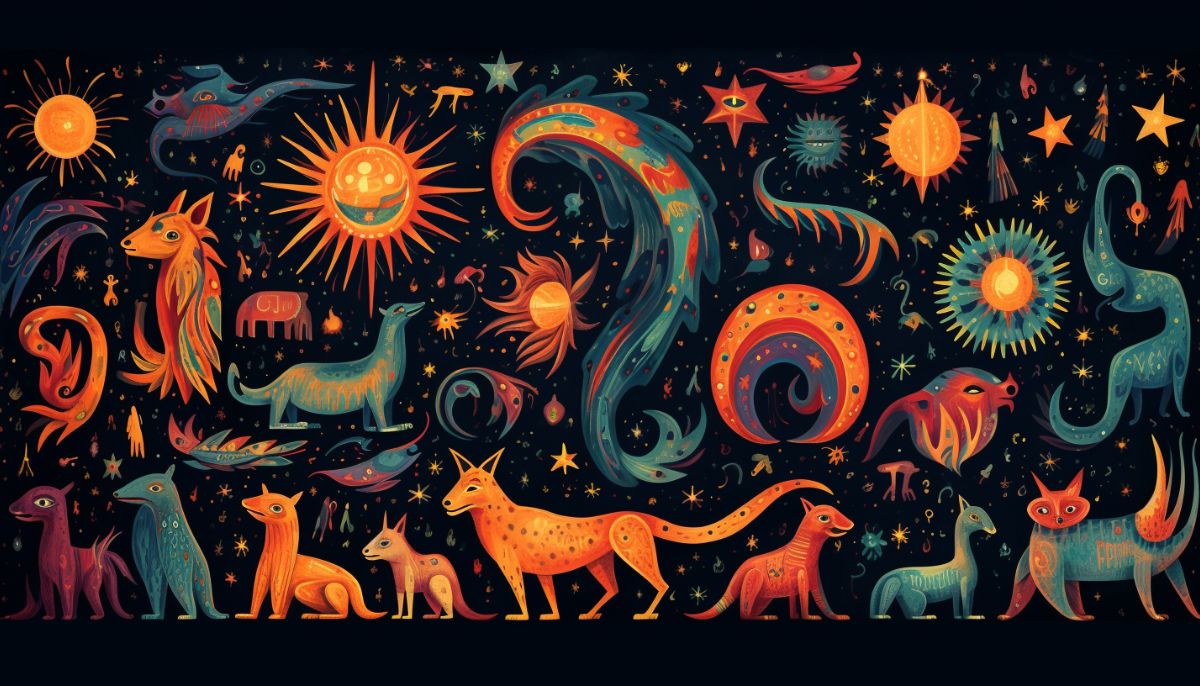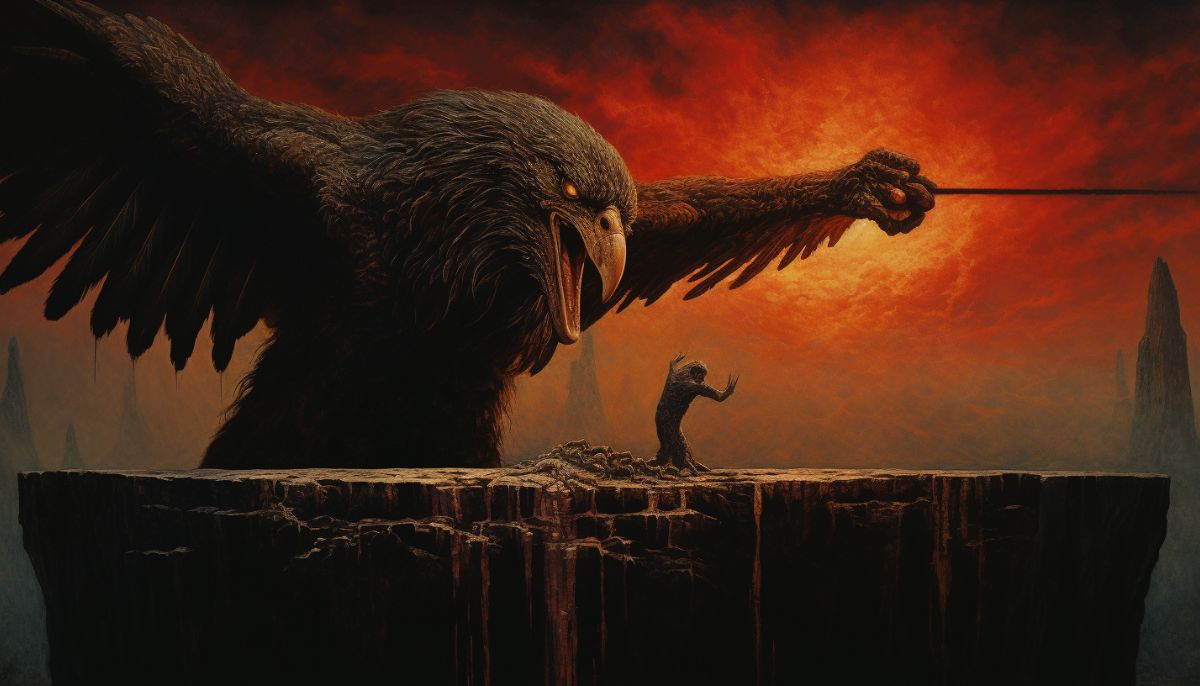Embark on a journey through Greek mythology as we unravel the riveting tales of the Caucasian Eagle. Explore its role, the stories it graced with its presence, and its symbolic significance in the rich world of Greek myths.
What did the Caucasian Eagle Look like?
The Caucasian Eagle was a colossal bird of prey, a majestic creature with mighty wings that allowed it to soar the skies with unparalleled grace. Its talons were as sharp as steel, easily gripping even the mightiest prey.
Cloaked in feathers as dark as night, it possessed piercing eyes that could spot its target from miles above. Ancient texts often depicted this eagle as a formidable guardian, perched high in the mountains.
It was not merely a creature of physical prowess but also a symbol of power and authority, evoking awe and dread in those who encountered it.
Mythical Origin of the Caucasian Eagle
The mythic origin of the Caucasian Eagle is intertwined with the tormented fate of Prometheus, the Titan who defied Zeus by stealing fire and giving it to humanity. As punishment for his audacious act, Zeus ordered the creation of the Caucasian Eagle and tasked it with an eternal and agonizing mission.
The myth of Prometheus and the eagle
In the timeless myth of Prometheus and the Caucasian Eagle, we encounter a harrowing tale that delves into the depths of divine retribution and the indomitable human spirit.
At its core, this myth is a poignant reminder of the consequences that befall those who dare to defy the will of the Olympian gods.
The Incessant Torment
Prometheus, the cunning and resourceful Titan, was bound to a desolate rock in the treacherous Caucasus Mountains. Each day, like an unrelenting harbinger of doom, the formidable Caucasian Eagle descended upon him, its talons tearing at his liver.
The organ’s remarkable ability to regenerate during the night made this torment particularly excruciating, subjecting Prometheus to an unending cycle of agony.
This cruel and relentless punishment was meant to serve as a haunting reminder of the dire consequences accompanying defiance of the divine order.
Themes of Divine Retribution
The story of Prometheus and the Caucasian Eagle encapsulates the theme of divine retribution, where the gods, in their omniscience, respond to defiance with relentless vengeance.
Prometheus’s audacious act of stealing fire from the gods to benefit humanity had drawn the wrath of Zeus, the king of the Olympian pantheon.
The punishment inflicted upon him was not merely physical but symbolic of the eternal consequences of challenging the divine authority.
The Boundary Between Gods and Mortals
This myth also serves as a powerful illustration of the boundaries that separate gods from mortals within Greek mythology. Prometheus’s theft was a bold attempt to bridge this gap, bestowing humanity with a gift that belonged to the realm of the divine.
However, The punishment he endured reinforced the unbridgeable chasm between the two worlds, emphasizing the unyielding hierarchy of the Olympian gods.
Enduring Themes of Prometheus and the Eagle
The tale of Prometheus and the Caucasian Eagle remains a haunting and enduring narrative within Greek mythology, echoing themes of suffering, defiance, and the eternal consequences of challenging divine authority.
It stands as a testament to the enduring power of myth to explore the complex interplay between gods and mortals and the enduring nature of suffering in the face of divine retribution.
Is an eagle a symbol of Greece?
In the expansive tapestry of Greek culture, symbols often carry profound meaning, reflecting the people’s beliefs, values, and struggles. One such emblem, the Pontic Eagle, holds a significant place in the heritage of northern Greece.
Distinct from its mythological counterpart, the Caucasian Eagle, the Pontic Eagle holds specific significance in the cultural tapestry of northern Greece. It is closely associated with the indigenous tribes of the region, particularly among the Pontic Greeks.
For them, this eagle represents more than a mere creature of the wild; it embodies wisdom, courage, and strength, serving as a powerful symbol of their unique cultural identity and spiritual beliefs.
Want to know more about the creatures and monsters of Greek Mythology?

Explore more articles like this in our broader series on Greek monsters. To delve even deeper into the world of mythical creatures, be sure to check out our comprehensive hub article on the monsters of Greek mythology.






